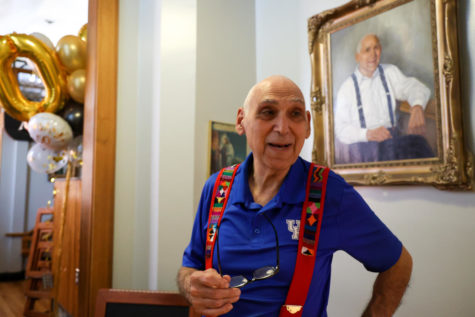Study: Teens lack substance abuse resources
March 13, 2009
By Nicole Ball
Ninety percent of the 1.4 million adolescents struggling with substance abuse do not enter treatment, partly due to the lack of services devoted to teens needing assistance, according to a report in the March issue of the Journal of Substance Abuse Treatment by a UK researcher.
Hannah Knudsen, an assistant professor in the UK Department of Behavioral Science and a researcher in the university’s Center on Drug and Alcohol Research, looked at nine domains of quality, such as whether programs offer an array of comprehensive services for her study.
Overall, the random sample of 154 treatment programs Knudsen surveyed received an average medium-ranking score in overall quality.
Knudsen said Lexington is experiencing a lack of teen treatment facilities and resources.
According to a search database set up by the Substance Abuse and Mental Health Services Administration, at dasis3.samhsa.gov, young people can search for treatment availability in cities across the country.
According to the Web site, six of the 38 substance abuse programs within 20 miles of Lexington offer services for teens. Knudsen said because this number is so few, families have to travel further to find proper treatment programs for their teens.
“One barrier has to do with the limited amount of funding that exists for substance abuse treatment,†she said in an e-mail to the Kernel. “In addition, treating adolescents means that treatment programs need to find counselors with experience and training that helps them to work well with teenagers; that can also be a challenge.â€
Teen Pop is a treatment center for adolescent substance abusers in Lexington. Beth Hellebusch, the program director of Teen Pop, said the center offers intensive outpatient treatment for kids who are beyond the prevention stage and are experimenting with different substances.
She said because Lexington treatment for teen users is limited, most attend Teen Pop’s program or the Ridge Behavioral Health System, another outpatient treatment facility. Hellebusch also said she would love to see easier access to treatment programs for teens, and more funding to create more programs.
The problem of making adolescent substance abuse programs available is a difficult problem for cities to solve on their own, Knudsen said.
“But part of the solution is for communities to understand whether there are enough adolescent-only treatment programs to address the number of adolescents needing treatment,†she said. “And if local governments are providing funding for treating adolescents, they should make sure that adolescents are being treated in programs that are separate from adult treatment programs.â€

























































































































































